Cómo realizar una prueba de carga de una batería AGM de ciclo profundo y alternativas
When it comes to maintaining and diagnosing the health of your AGM battery, understanding how to perform a load test is essential. A deep cycle AGM battery is often used in a variety of applications such as marine, RV, solar power storage, and backup power systems. Knowing how to test its capacity under load conditions can prevent unexpected failures and ensure your system runs smoothly. In this comprehensive guide, we will cover not only how to perform a load test on a deep cycle AGM battery but also explore alternative testing methods to give you a complete picture of your battery's health.
- Why Testing Your AGM Battery Is Critical
- How to Prepare for Load Testing an AGM Battery
- Performing a Load Test on a Deep Cycle AGM Battery
- Alternative Methods for Testing an AGM Battery
- Factors That Affect AGM Battery Test Results
- Interpreting Load Test Results for AGM Battery Health
- What to Do After Testing Your AGM Battery
- Extending the Life of Your AGM Battery After Testing
- Common Mistakes to Avoid When Testing an AGM Battery
- The Role of AGM Battery Testing in Different Applications
- Advanced AGM Battery Testing Equipment
- Cost-Benefit Analysis of AGM Battery Testing
- How to Perform a Load Test on a Deep Cycle AGM Battery and Alternative Methods
Why Testing Your AGM Battery Is Critical
The Unique Characteristics of AGM Batteries
The AGM battery (Absorbent Glass Mat) offers advantages over traditional flooded lead-acid batteries, such as:
Spill-proof and maintenance-free design
Faster charging capabilities
Superior deep cycling performance
Higher resistance to vibration
Lower self-discharge rate
Despite these benefits, even an AGM battery is not immune to wear, sulfation, and capacity degradation over time. Testing ensures your investment continues to deliver optimal performance.
Early Detection of Battery Problems
Routine testing of your AGM battery allows you to identify issues such as:
Loss of capacity
Cell imbalances
Sulfation build-up
Internal short circuits
Catching these problems early can extend the life of your AGM battery and save you from costly downtime.
How to Prepare for Load Testing an AGM Battery
Safety Precautions
Before starting a load test, take these safety measures:
Wear protective gloves and eyewear.
Ensure proper ventilation.
Disconnect the AGM battery from any loads or chargers.
Use insulated tools to avoid accidental short circuits.
Tools and Equipment Needed
To perform a proper load test on your AGM battery, gather the following:
Digital multimeter or voltmeter
Battery load tester (manual or electronic)
Battery hydrometer (optional for comparison)
Infrared thermometer (optional to monitor temperature)
>>See also How Long Does the Battery Last on a Hedge Trimmer
Performing a Load Test on a Deep Cycle AGM Battery
Step 1: Measure Open Circuit Voltage (OCV)
Start by measuring the battery’s open circuit voltage after it has rested for at least 12 hours without any load or charging.
Fully charged AGM battery: 12.8 to 13.0 volts (for 12V battery)
If the reading is below 12.4V, charge the battery before proceeding.
Step 2: Apply the Load
Use a load tester that can draw a current equal to 50% of the AGM battery's rated amp-hour capacity for 15 seconds.
For example, for a 100Ah battery:
Apply 50 amps for 15 seconds.
Monitor voltage drop during the test.
Step 3: Evaluate Voltage Drop
A healthy AGM battery should maintain voltage above 9.6V under load (for a 12V battery). Lower readings indicate:
9.6V or higher: Good condition
9.0V to 9.5V: Marginal condition
Below 9.0V: Weak or failing battery
Step 4: Check Recovery Voltage
After removing the load, observe how quickly the voltage recovers:
Rapid recovery to 12.6V or higher indicates good health.
Slow or incomplete recovery suggests internal resistance issues.
Alternative Methods for Testing an AGM Battery
Conductance Testing
Conductance testers send a small AC signal through the AGM battery to measure its ability to conduct current. Benefits include:
Quick results
No need for full charge
Safe for the battery
Capacity Testing
This test fully discharges the AGM battery at a controlled rate until it reaches its cutoff voltage. It offers the most accurate measure of usable capacity but requires specialized equipment and can be time-consuming.
Internal Resistance Testing
Advanced testers measure the internal resistance of the AGM battery:
High internal resistance indicates sulfation or cell degradation.
Low internal resistance suggests the battery is in good condition.
Voltage Drop Testing Under Real Load
Simply monitoring the voltage while using the AGM battery in its regular application can provide valuable insights. Significant drops during normal operation suggest capacity loss.
Factors That Affect AGM Battery Test Results
Temperature
Cold temperatures reduce battery voltage and capacity during testing. Perform tests at room temperature (68-77°F) for accuracy.
State of Charge
Always test a fully charged AGM battery to obtain meaningful results. Partial charges yield misleading data.
Battery Age
Older AGM batteries naturally have lower capacity. Compare results against manufacturer specifications and expected life cycle.
Connection Quality
Loose or corroded terminals affect voltage readings. Clean and tighten all connections before testing.
Interpreting Load Test Results for AGM Battery Health
Excellent Condition
Minimal voltage drop under load
Fast recovery to near-full voltage
Low internal resistance
Marginal Condition
Noticeable voltage sag
Slower voltage recovery
Moderate internal resistance
Poor Condition
Severe voltage drop
Very slow recovery
High internal resistance
Reduced amp-hour capacity
What to Do After Testing Your AGM Battery
If the Battery Is Healthy
Continue normal use.
Schedule periodic tests every 3-6 months.
If the Battery Is Marginal
Use with caution.
Avoid deep discharges.
Consider proactive replacement if critical.
If the Battery Is Failing
Replace immediately to prevent system failure.
Recycle the old AGM battery responsibly
Extending the Life of Your AGM Battery After Testing
Proper Charging Practices
Use a charger designed for AGM batteries.
Avoid overcharging or undercharging.
Maintain float charge if stored long-term
Temperature Managemen
Avoid exposing the AGM battery to extreme heat or cold.
Store in a climate-controlled environment.
Regular Maintenance
Clean terminals periodically.
Check for bulging, leaks, or cracks.
Test voltage and conductance routinely.
Common Mistakes to Avoid When Testing an AGM Battery
Testing While Discharged
Always fully charge the AGM battery before testing to ensure valid results.
Ignoring Rest Period
Allow at least 12 hours of rest after charging or discharging before performing an open circuit voltage test.
Using Inappropriate Load
Match the load tester’s capacity to the battery’s size. Excessive loads can damage the AGM battery.
Overlooking Safety Precautions
Never bypass safety gear or procedures when working with any battery, including AGM batteries.
The Role of AGM Battery Testing in Different Applications
Marine and RV Systems
Reliable battery power is crucial for life-support systems, navigation, and comfort appliances. Regular load testing prevents unpleasant surprises while on the road or at sea.
Solar Power Storage
Solar energy systems depend on predictable battery storage. Load testing helps optimize system performance and avoid premature battery replacement.
Backup Power Systems
Uninterruptible power supplies (UPS) and emergency systems require peak battery performance. Routine testing ensures they function when most needed.
Industrial and Commercial Applications
Forklifts, floor scrubbers, and telecommunication systems often use AGM batteries. Scheduled load testing keeps operations running smoothly.
>>See also What Is the Highest Voltage Achievable in DC Systems
Advanced AGM Battery Testing Equipment
Midtronics Analyzers
Highly accurate conductance and load testers widely used in automotive and industrial sectors.
Solartron Analytical Equipment
Laboratory-grade tools for advanced battery diagnostics, including impedance spectroscopy.
DIY Options
Budget-friendly load testers and multimeters allow homeowners to monitor their AGM batteries effectively.
Cost-Benefit Analysis of AGM Battery Testing
|
Aspect |
Cost Impact |
Benefit |
|
Load Testing |
Moderate (equipment cost) |
Prevents early failure |
|
Conductance Testing |
Higher (advanced tools) |
Precise diagnostics |
|
Routine Monitoring |
Low (simple tools) |
Extended battery life |
|
Professional Testing |
Variable (service fees) |
Expert evaluation |
Investing in proper testing equipment pays for itself by maximizing the service life of your AGM battery.
How to Perform a Load Test on a Deep Cycle AGM Battery and Alternative Methods
Performing a load test on your AGM battery is one of the most effective ways to assess its true health and capacity. By following proper procedures, using the right equipment, and understanding your test results, you can keep your AGM battery performing optimally for years. Alternative methods like conductance testing and internal resistance measurements offer even more insight. Regardless of your approach, regular testing and maintenance of your AGM battery ensure reliability, safety, and maximum return on your investment. Always make AGM battery testing a core part of your maintenance routine to avoid failures and extend battery life.

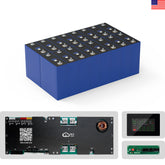

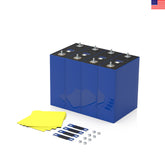

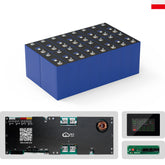

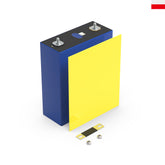

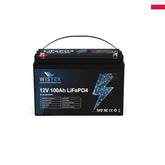




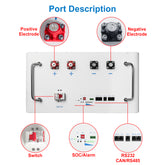

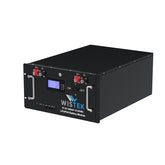


Leave a comment
All blog comments are checked prior to publishing